The launch of "Soyuz-2.1a"
• Start a rocket "Soyuz-2.1a"

December 27, 2018 held the fourth launch in the history of the cosmodrome East - the first civil cosmodrome in Russia. Carrier rocket "Soyuz-2.1a" was successfully launched in the estimated time, and separated the upper stage "Fregat" delivered to the target orbit two Russian satellite "Canopus-B" and 26 small satellites belonging to other countries.
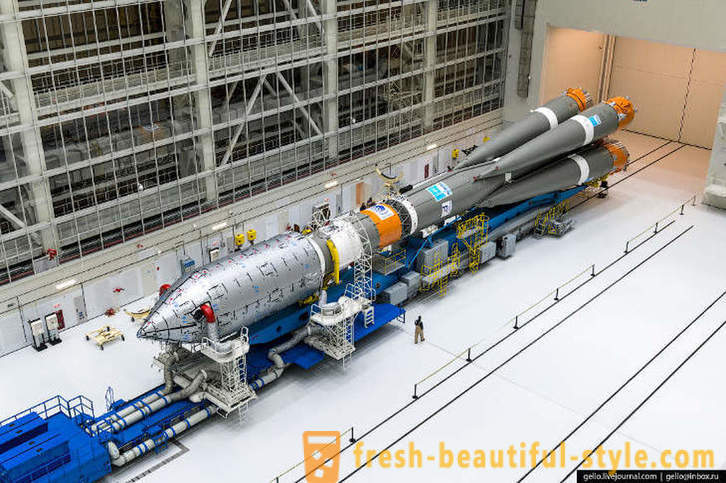
assembly and test launch vehicle housing (MIC RN). It hosts the assembly of the carrier rocket, docking it with the space head part (HGC) and prepare a space rocket (RKN) to be exported to the launch pad. The total area of the building - about 45 thousand square meters, which is comparable to six football fields. The assembly of the "Soyuz-2.1a" completed on December 20 - a week before the start.
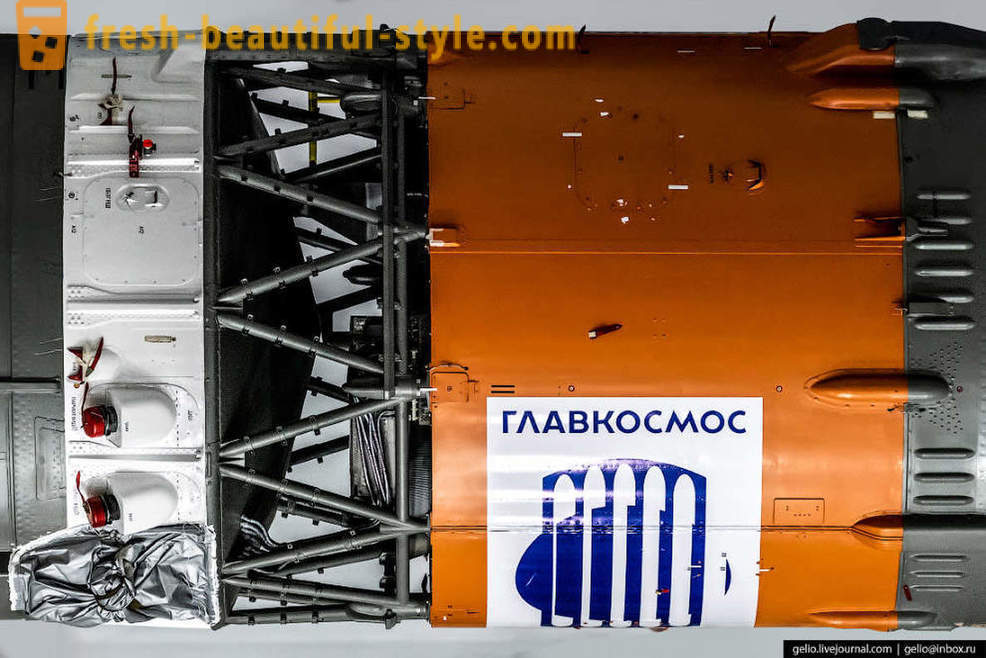
assembly and the head assembly SHM carried in another case - MIK spacecraft and upper stages (MIC CA and RB). The structure of the head unit includes the upper stage "Fregat", two Russian satellites and the associated payload in the form of 26 small foreign spacecraft. For their launch answered "Glavkosmos" and "Glavkosmos launch services" - the operator of commercial launches of carrier rockets "Soyuz-2" with the Russian space centers.
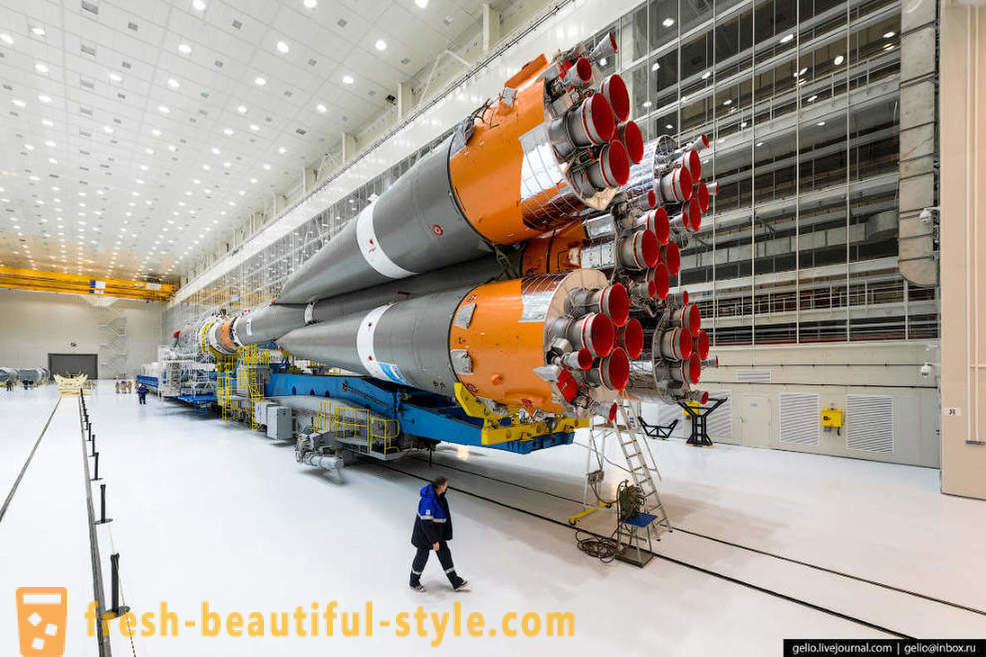
"Soyuz-2.1a" - a modification of the rocket "Soyuz-2", created on the basis of "Soyuz-U" and is equipped with an advanced control system and propulsion systems I and II levels. This missile is different from the previous model of increased precision removal of spacecraft into orbit to the desired weight and increased excretion of payloads into space. "Soyuz-2.1a" produced in Samara, in the Roman Catholic Church "Progress".
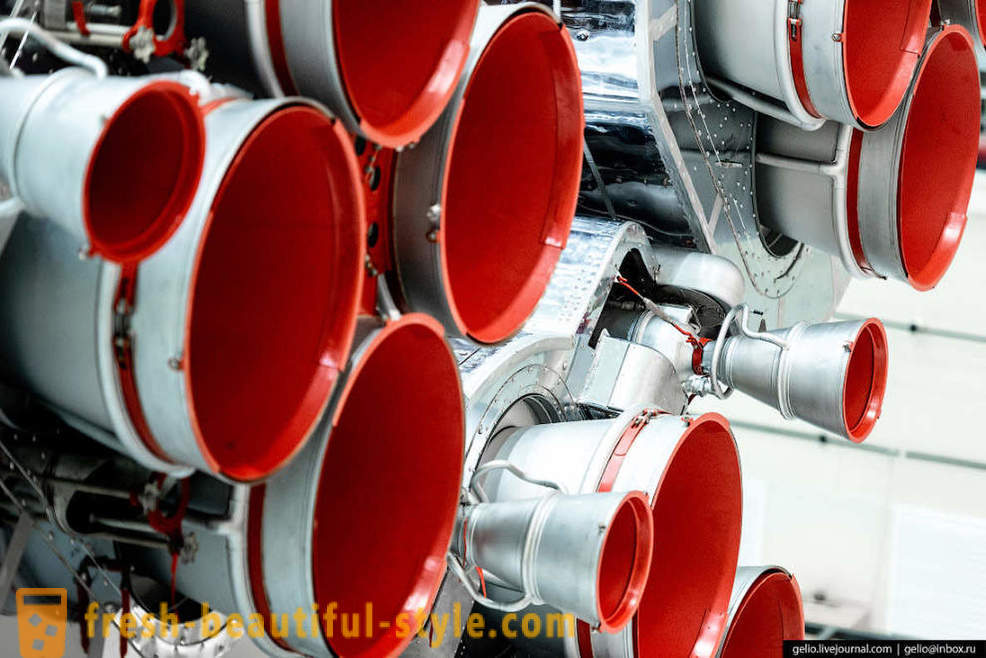
four sustainer engine RD-107A installed on the first stage. They work on the propellant, wherein the fuel used kerosene, and as an oxidizer - liquid oxygen.

before transport to the launch pad space head part (a part of the Republic of Belarus "Frigate", spacecraft and fairing) is already docked to the rocket and closed a layer of insulation. Maintaining a comfortable temperature and humidity conditions for satellites within HGC provides temperature control system. It is something like the air conditioner with air ducts, summed to the headunit.
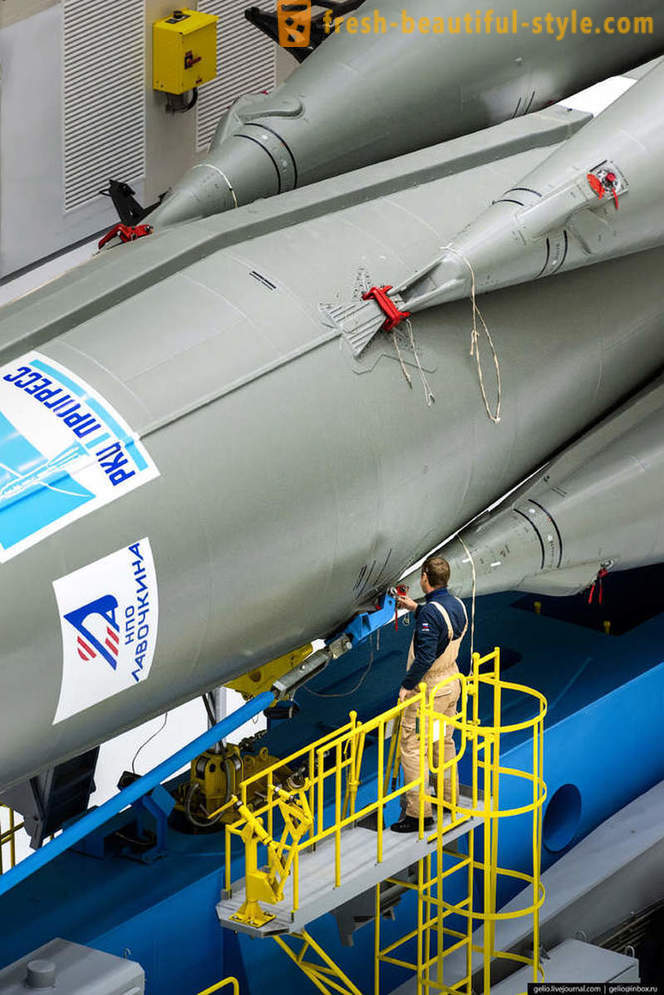
Specialists conduct a final check of the rocket prior to removal from Mika.
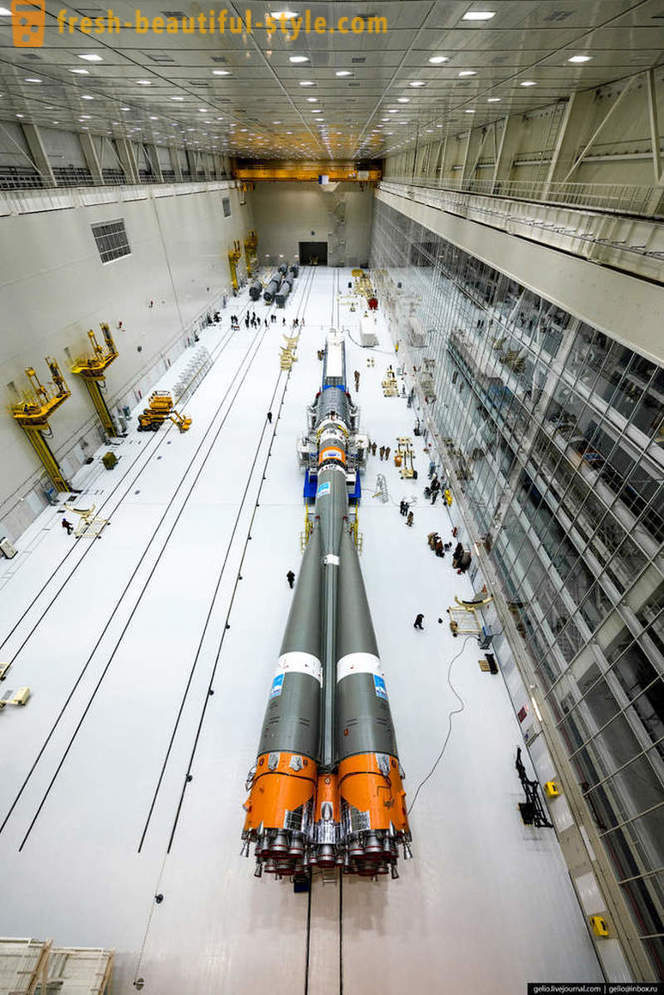
Inside Mika missile moves on rails. All the way to the launch pad it is also done on the railway.
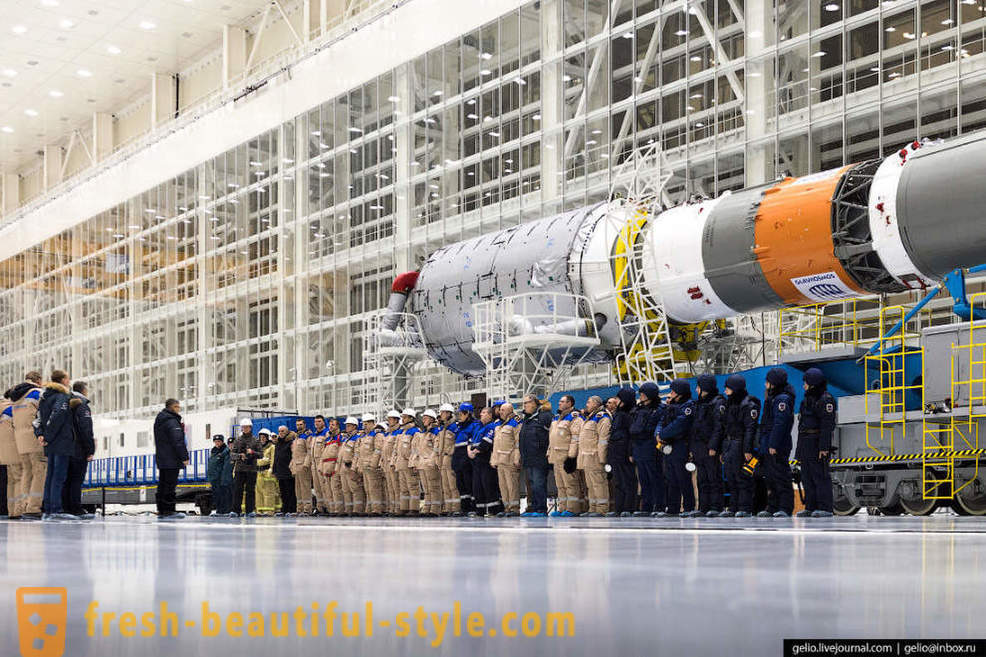
On the far side Mika visible detail other missiles - "Soyuz 2.1b". Its launch is scheduled for the spring-summer 2019.

Traditionally, before the removal of the rocket carried general construction. In it involved operating staff of the Center of space infrastructure and RCC "Progress", firemen, railway and security.

The export of missiles from Mika. It moves on rails on a special platform.

Distance from Mick to the launch pad - 4, 5 km. To overcome it, the rocket will take about an hour.

transportation Work began before dawn, three days before the start.
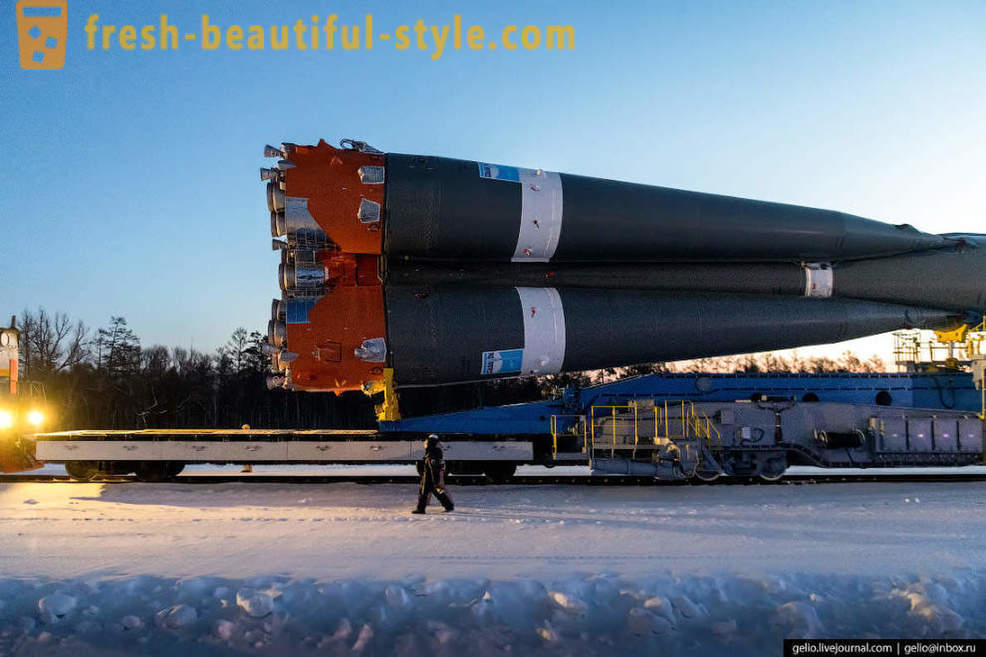
platform with a rocket pulls locomotive.

During transport the rocket is surrounded by hiking attendant. The train moves with comfortable for their speed 5 km / h.

Before refueling and delivery on board a payload launch weight of the missile is more than 311 tons. By comparison, the world's largest passenger aircraft Airbus A380 weighs 277 tons.

At the entrance to the launch pad is made peretsepka locomotive. Now the locomotive pulls and pushes the composition of the installer to the launch pad.
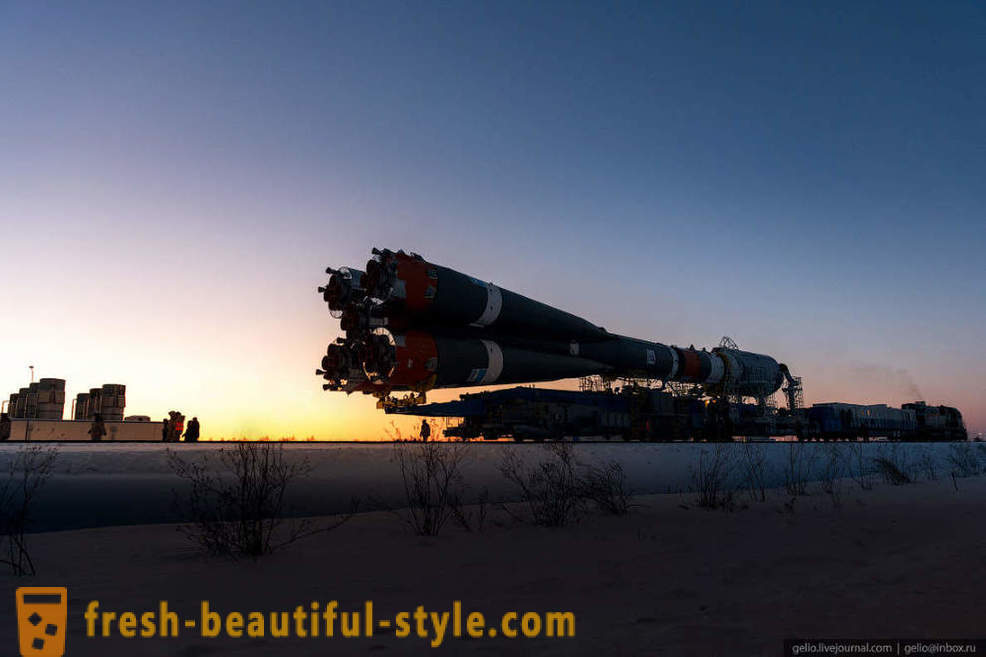

Length "Soyuz-2.1a" is 46, 3 meters, diameter - 10, 3 meters.

Rocket transports via the mobile service tower. It is a kind of mobile home, where the works on the preparation of the launch vehicle to the launch. The tower height of 52 meters (15 floors) drives to the rocket standing on the launch pad, and provides access to all of its systems.

Before the launch of a rocket holding metal-bearing farm. They retain a balance device with strong gusts of wind. On each side of the launcher positioned masts service, through which employees move spaceport.

After the delivery of the machine to the launch pad starts a special device to transfer missile into an upright position.
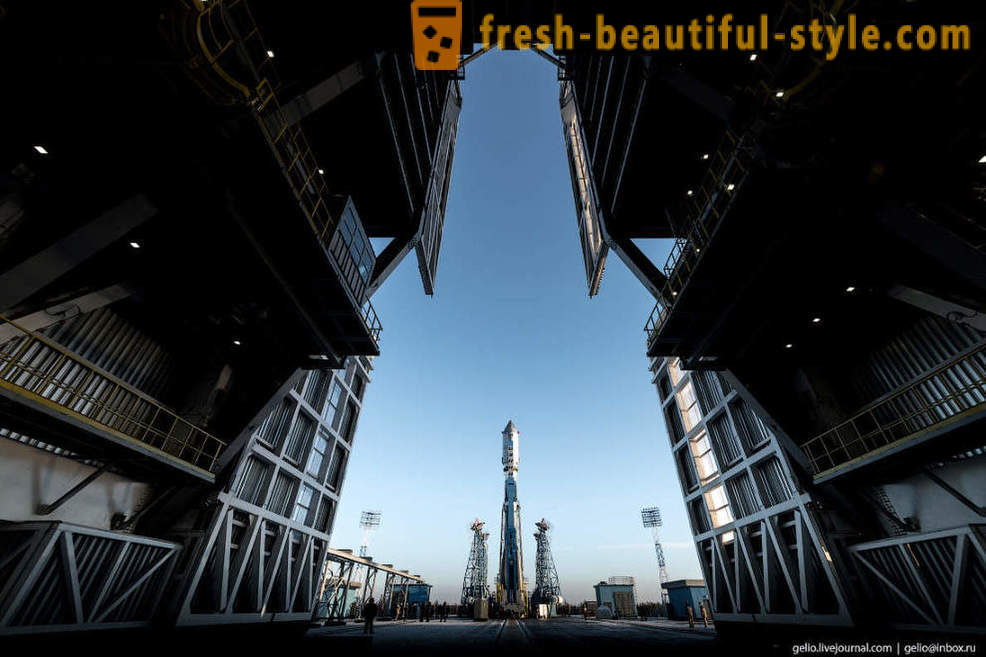
verticalization process takes about half an hour.
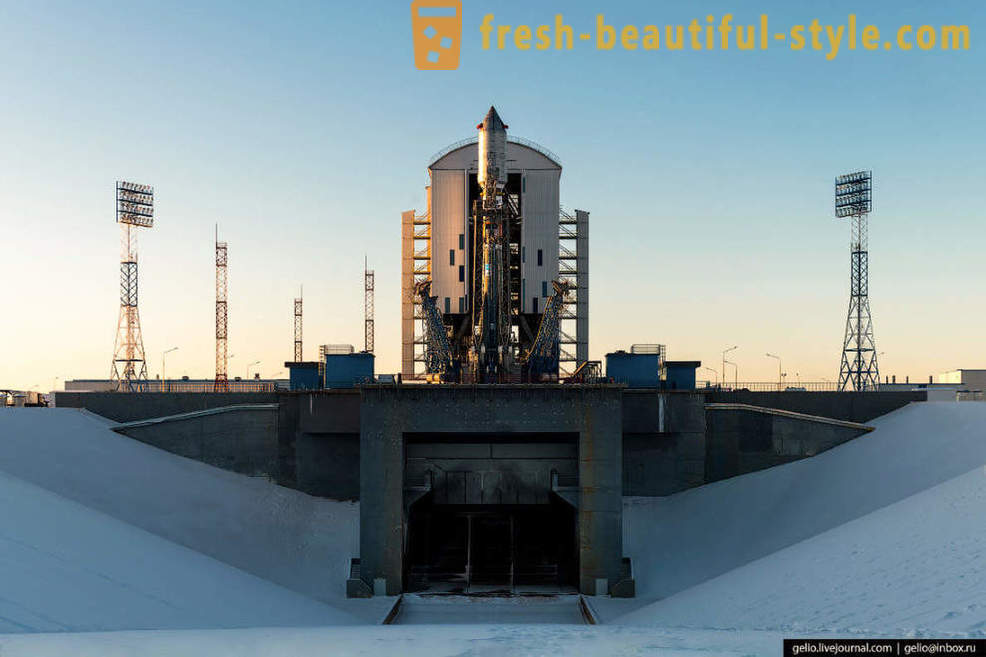
Then the installer is removed and a rocket zooms mobile service tower. For three days in this facility "Soyuz-2.1a" ready to fly: Connect communication load cargo and refuel.
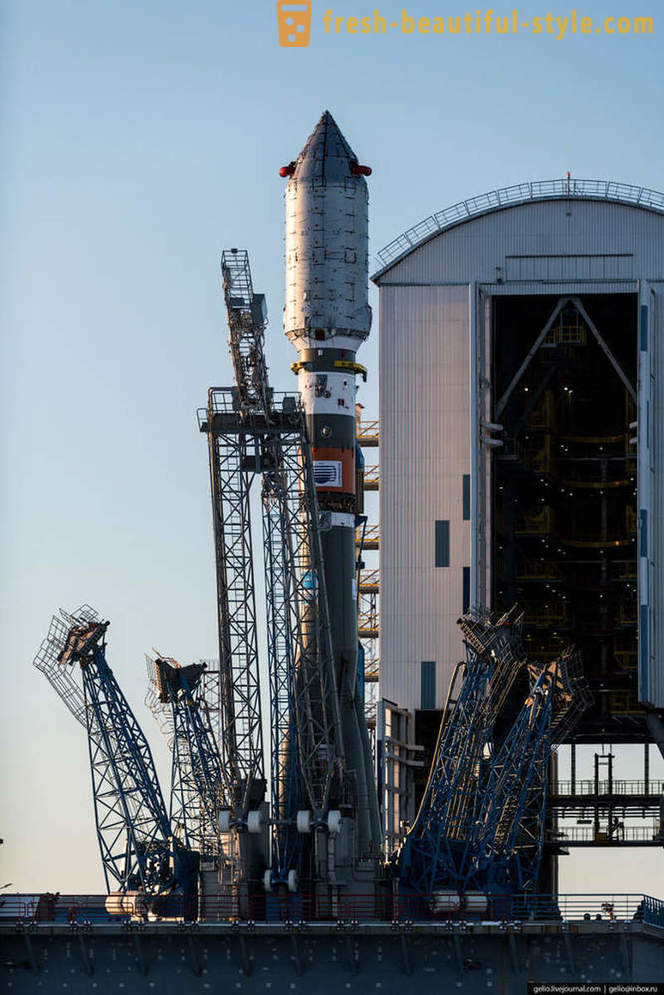
In the underground part of the starting section is a special channel that is designed for removing gas and the combustion products released during startup.
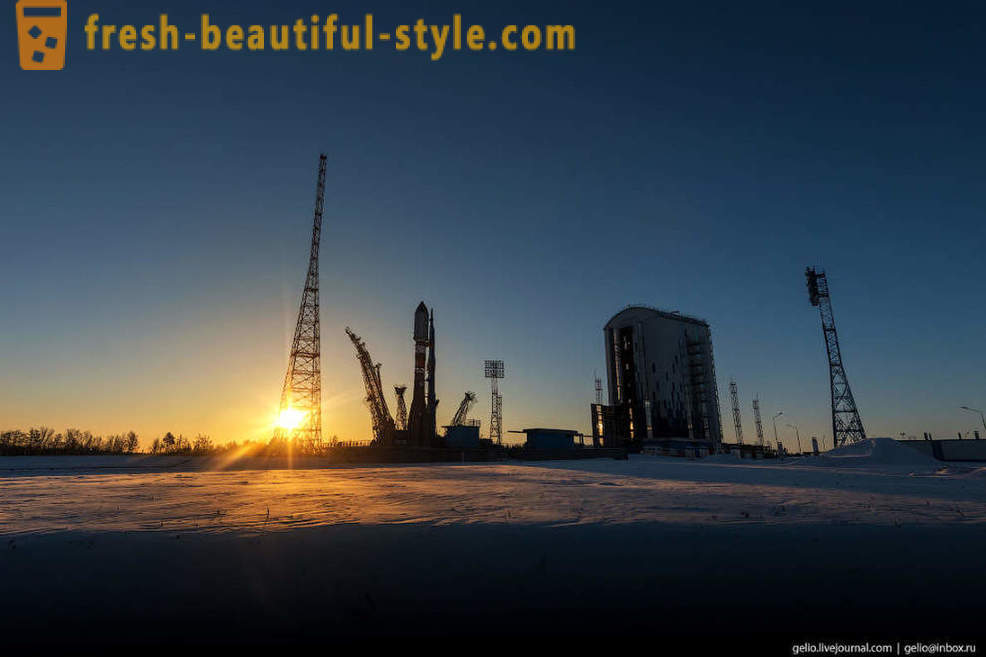
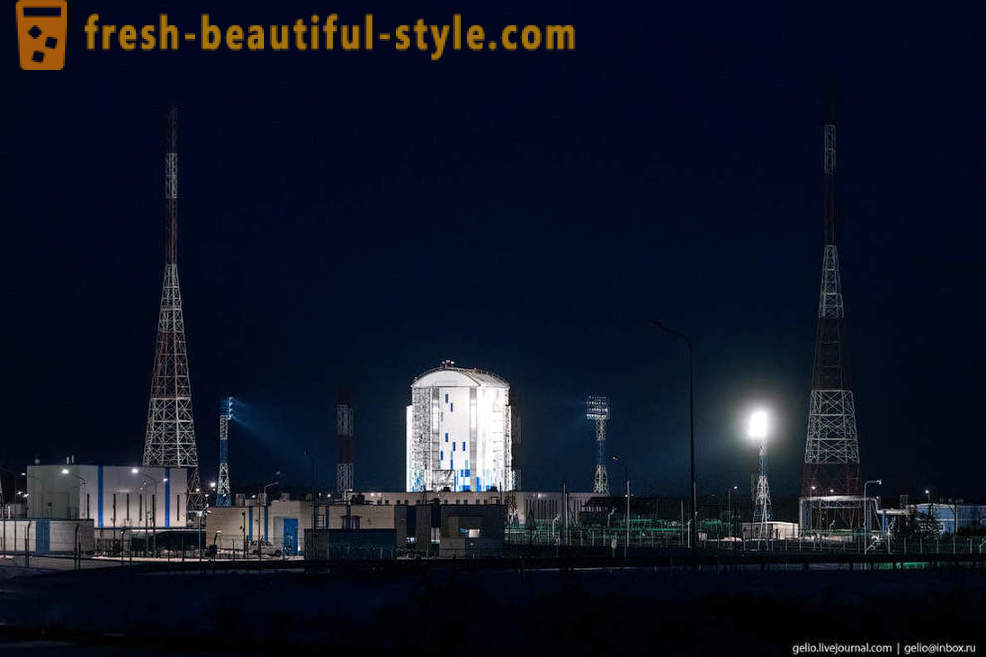
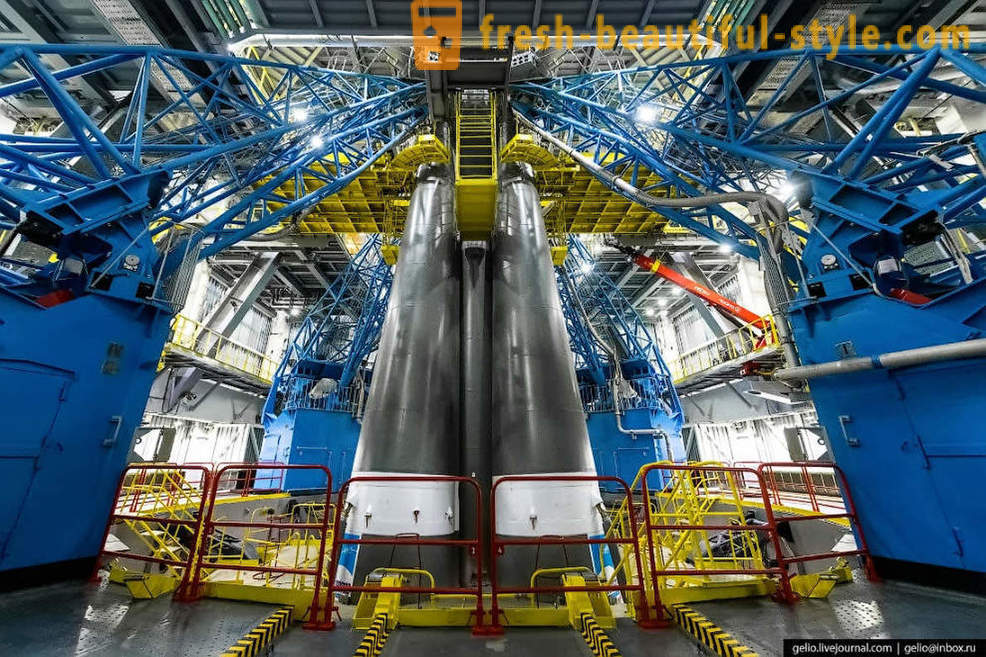
The night before the launch.
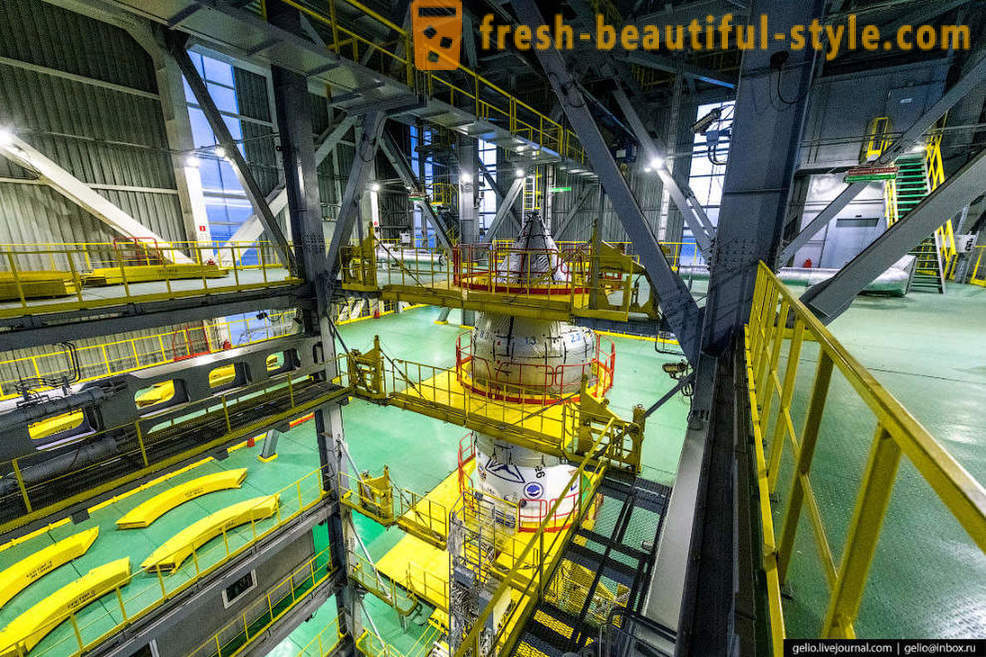
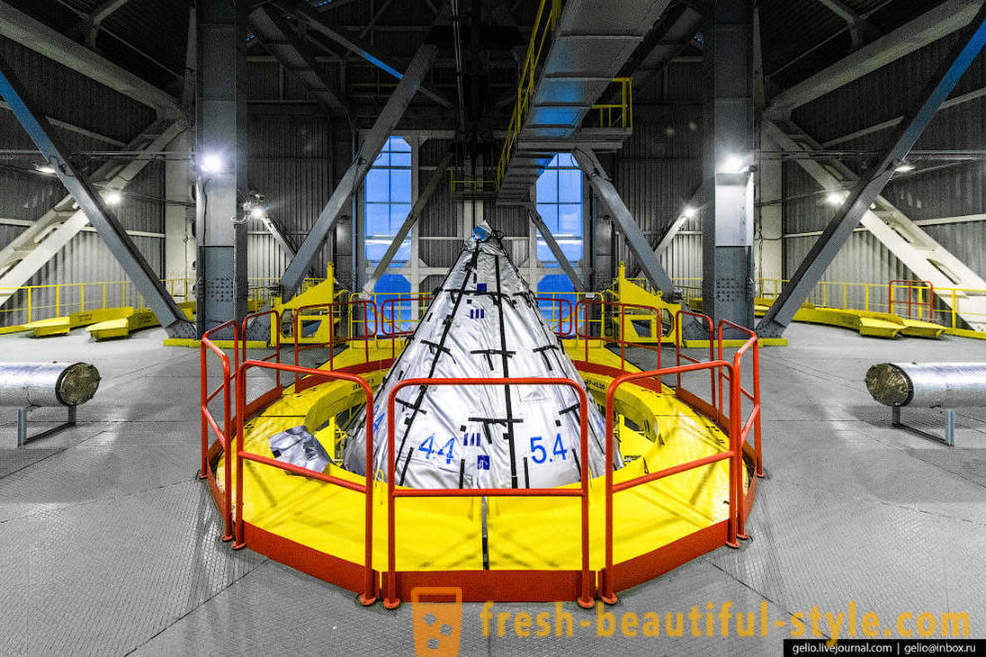
In such a tower can be carried prelaunch preparation in the most challenging environments.
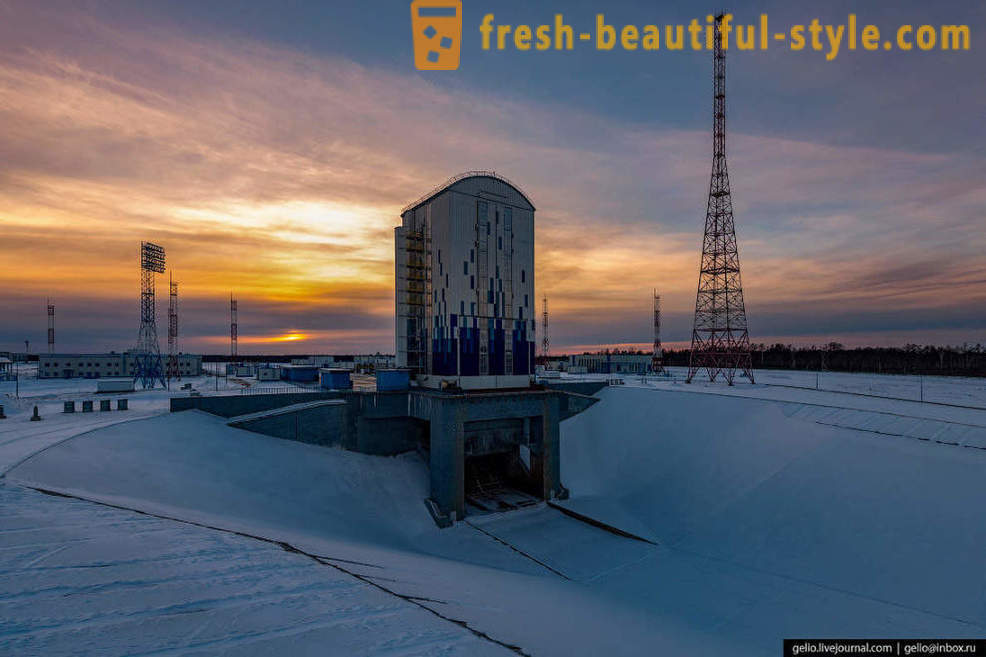
The nose fairing is still hidden under the protective cover.

The mobile service tower outside.
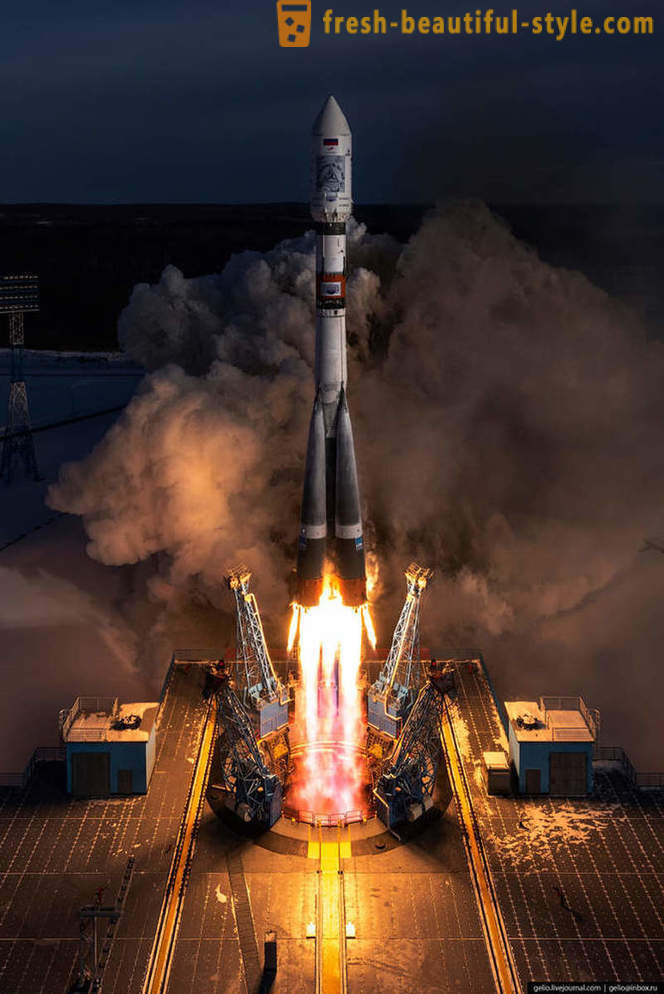
Since the launch of the missile.
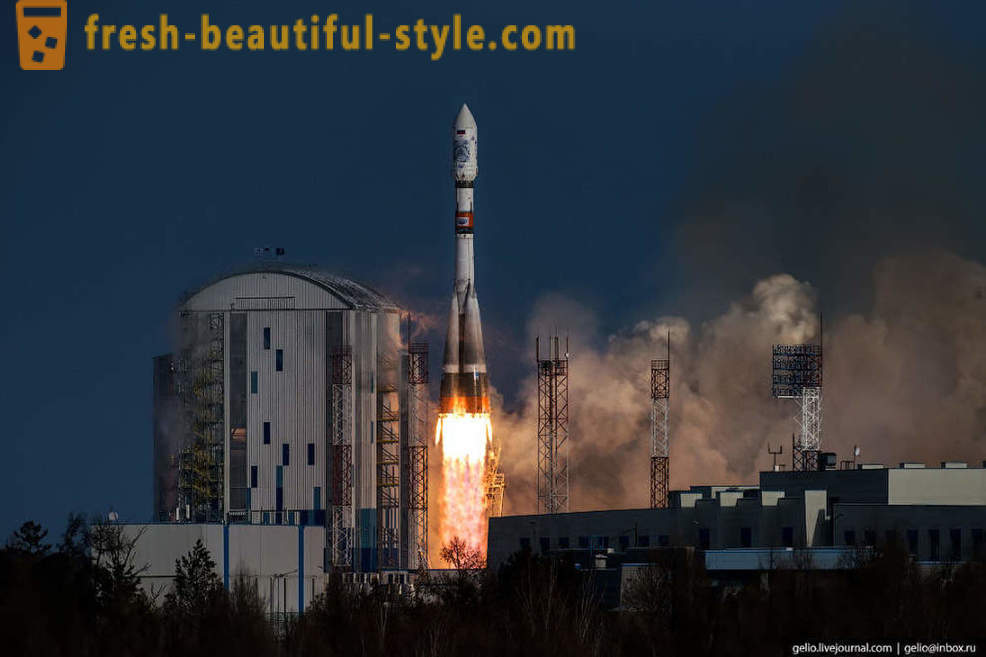
"Soyuz-2.1a" was started at 5 o'clock 07 minutes 18 seconds Moscow time and 11:00 07 minutes 18 seconds - on the Yakut.

and rocket upper stage "Fregat" worked normally.

to "Frigate" This launch was the 72 th. The device was successfully put into orbit satellites and spacecraft, and then entered the atmosphere at an altitude of 100 kilometers. Later fragments "Frigate" will flood into the non-navigational area of the Pacific Ocean.
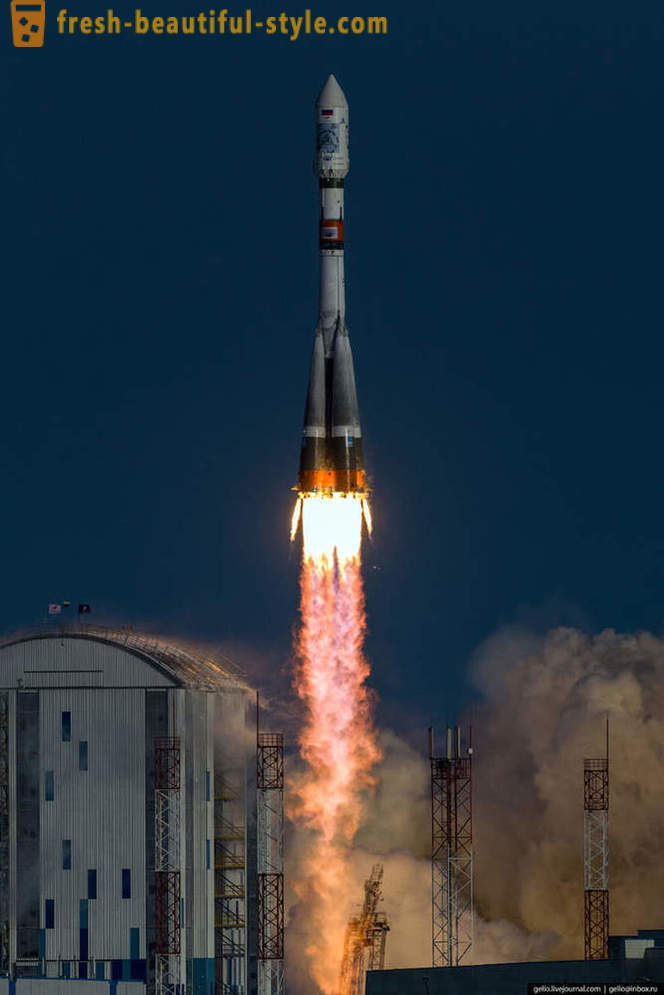
thrust of a jet engine.

Thrust - the force that "pushes" the rocket through the air.
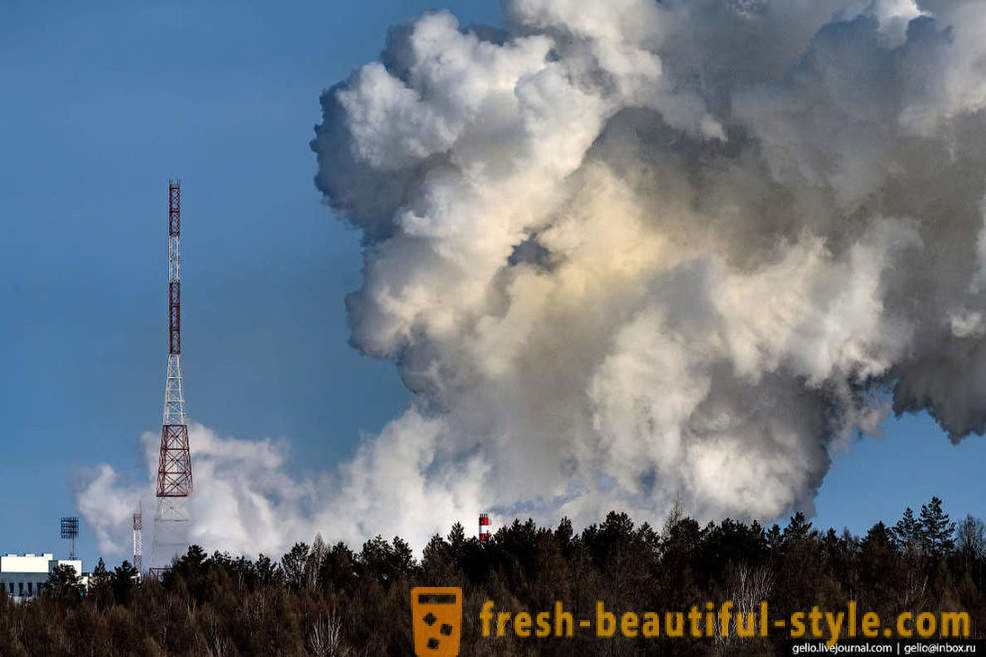
The fuel is combusted in the rocket engine, and exits from the nozzle in the form of gas mass under high pressure.
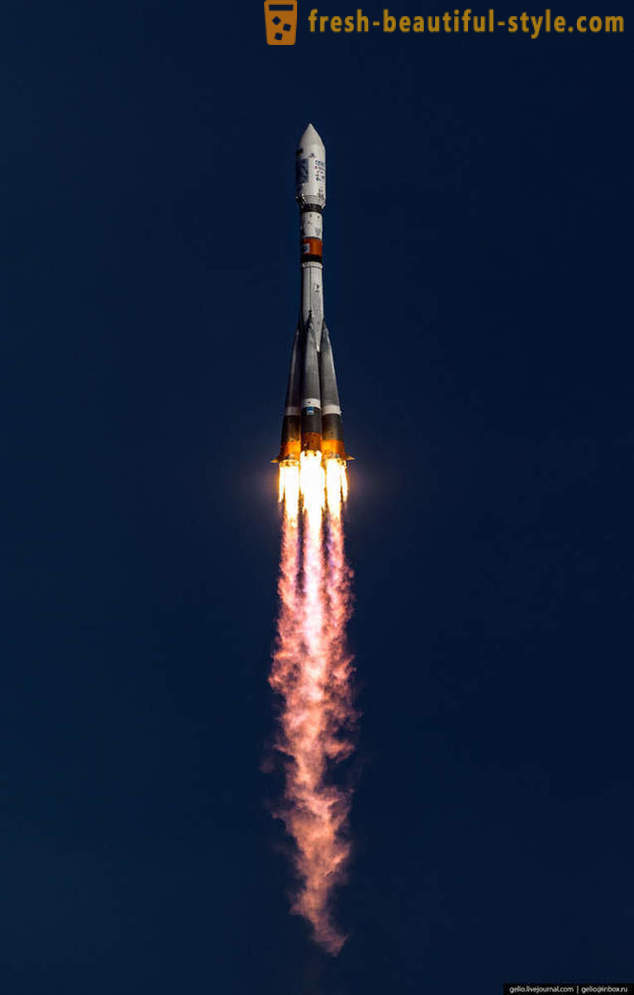

In the frosty air rises a large cloud of steam and smoke.
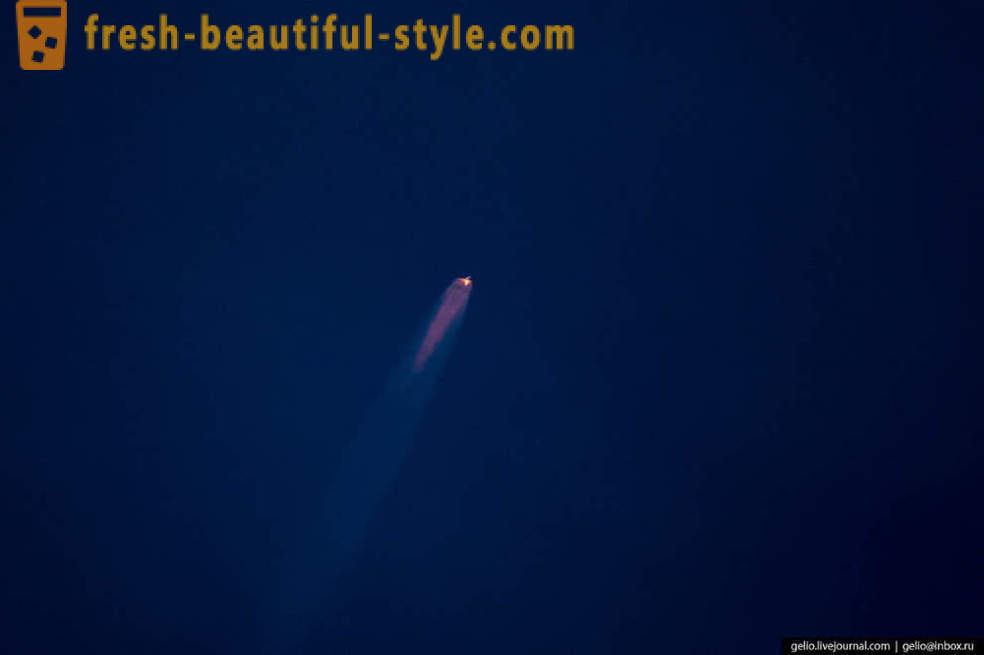
After starting the rocket revolves around its axis, and then lies down on the course.
Here you can see both the rocket reaches the white stripe. This condensation track, it appears from the fact that at a certain height of the engine exhaust causes condensation of atmospheric processes. Traces of water vapor or ice crystals are artificial clouds that later degenerate into pinnate. Separated from the rocket some parts of it, what advance warning residents of villages located in the area of the fall.
After starting the engines are lateral blocks 118 seconds and then switched off. Further, they are reset.
The central block consists of the tail section, in which a single-turn motor. He stops working after 280-290 seconds, then this step is also separated, but rocket continues to move very quickly turns into a small dot.
The percentage of start-ups in the world of Russia finished in third place in 2018. In 2019, "Roskosmos" plans to increase the number of launches of carrier rockets.
In "Glavkosmos launch services" believe that Russia must make a bet on the commercial launches and increase their number. The company's plans - to develop domestic space launch and adapt them to the requirements of foreign customers.













































